#umberto nobile
Explore tagged Tumblr posts
Text
umberto & titina // look after you
3 notes
·
View notes
Text
Umberto Nobile from the Titina movie is such a baby girl



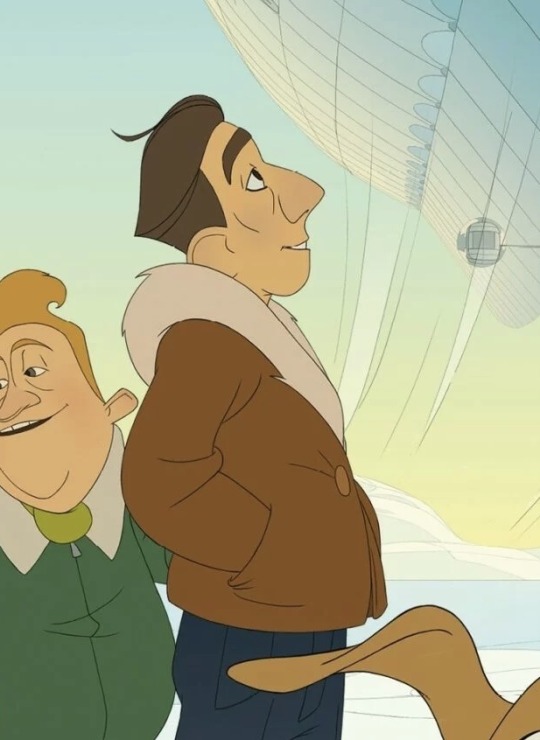
Im takling about the animated character voiced by Jan Gunnar Røise, NOT the man called Umberto Nobile that actually existed in real life, I’m not talking about him.
#if you have the opportunity to you should watch Titina#its a really great movie#very gorgeous music and visuals#tumblr has altered my brain wiring#making me call middle aged men baby girls#…. maybe it’s a good thing?#probably not#anyways watch the movie :)#my post#Titina#Titina the movie#Umberto Nobile#Titina Umberto Nobile#Umberto Nobile Titina movie#baby girl#middle aged man
8 notes
·
View notes
Text
I don't know about the real Umberto Nobile, but he is so written as bi or closeted gay in Titina
1 note
·
View note
Text
Arno Breekveld Dicht de Dag
Aan mijn ouders Heb ik dan nu de gedrukte / opdracht om een heel dun / rafeldraadje om mijn / ouders en mijzelf te rijgen, / opdat wij in het wit van de / wensheid bij elkaar blijven / zullen straks? Krijg ik die taak dan / slechts met kost en inwoning / opgedragen? Verder niets / waar ik garen bij moge / spinnen? Wordt alleen op / bladzij 27 naar een / standplaats verwezen, niet / meer dan een…

View On WordPress
#20-ste eeuws#Atte Jongstra#dichter#Italia#NL#Noordpool#ontdekkingsreiziger#ouders#pseudoniem#Umberto Nobile#voorwoord#Zeppelin
0 notes
Text
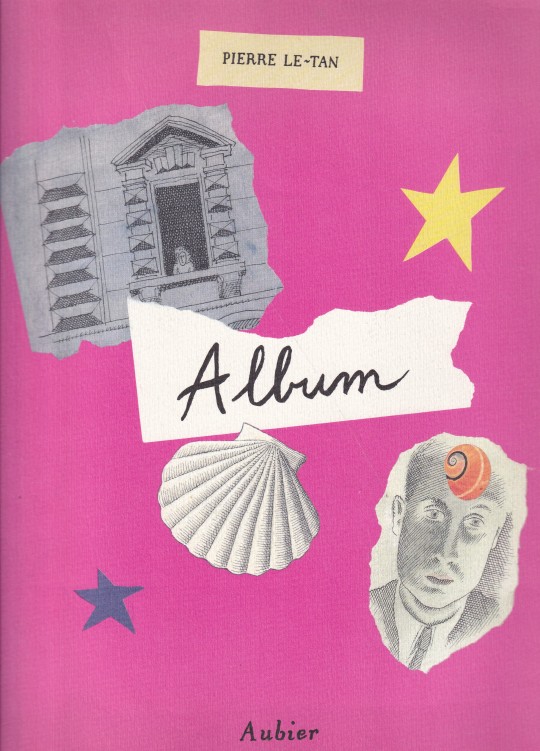
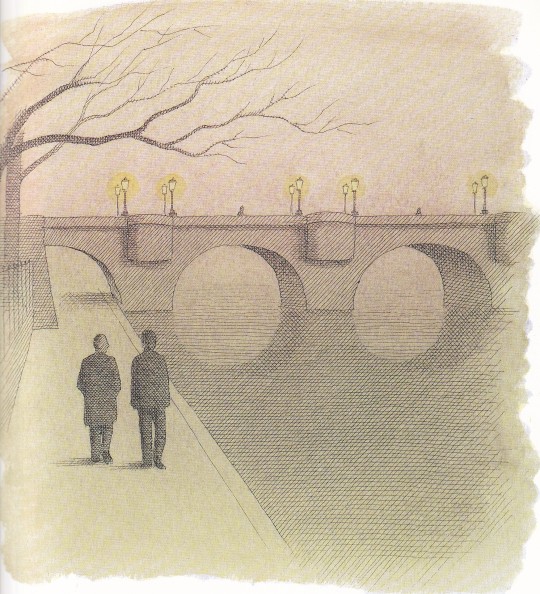
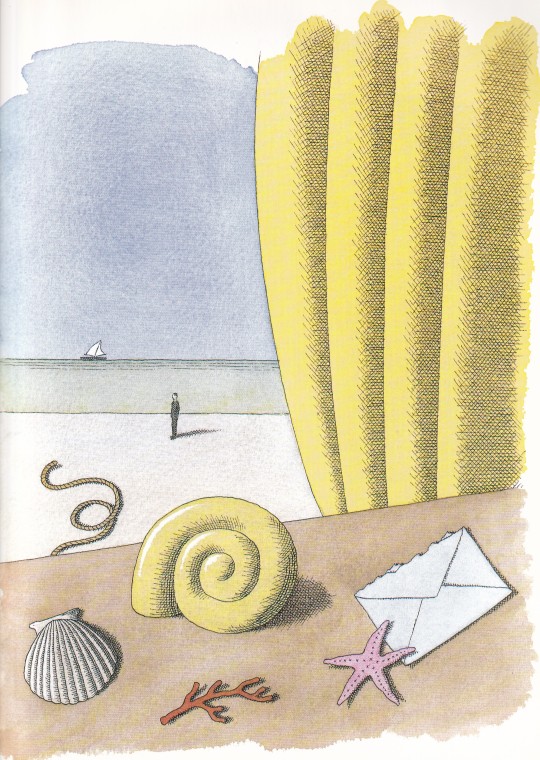
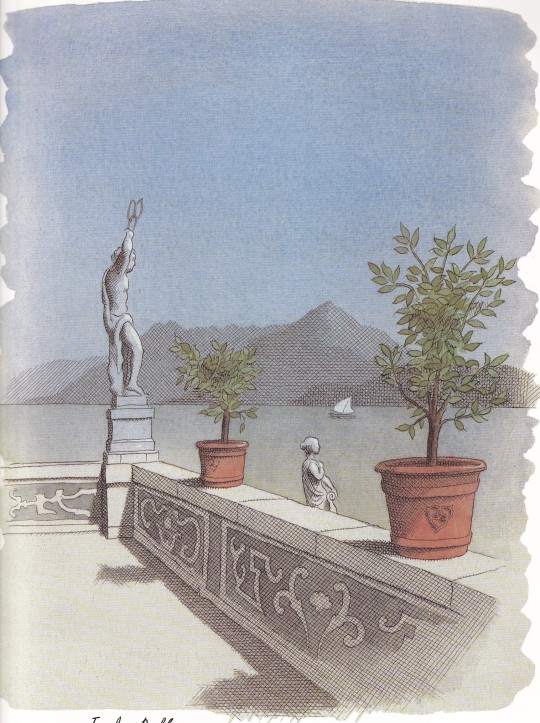


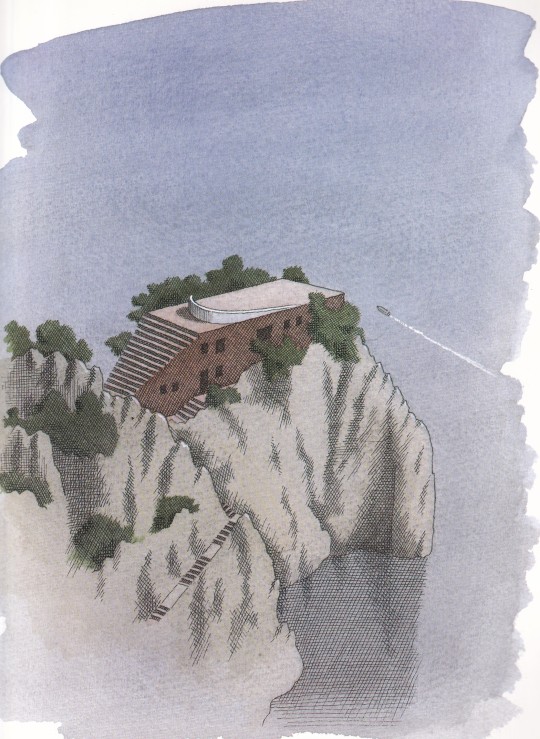



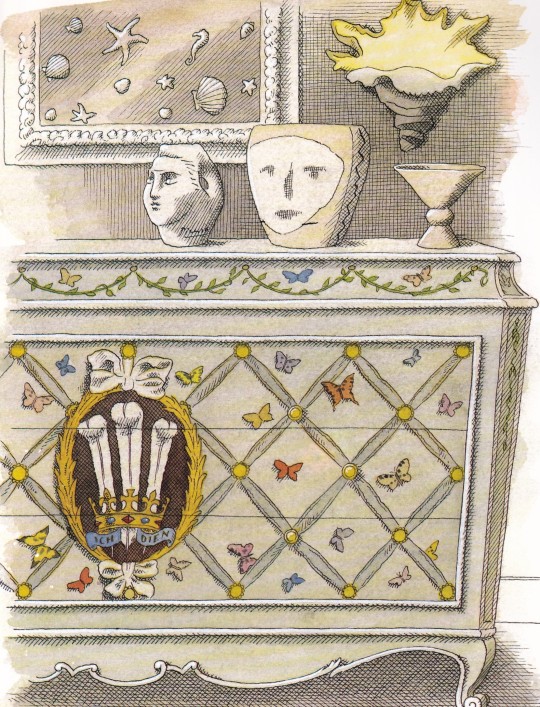
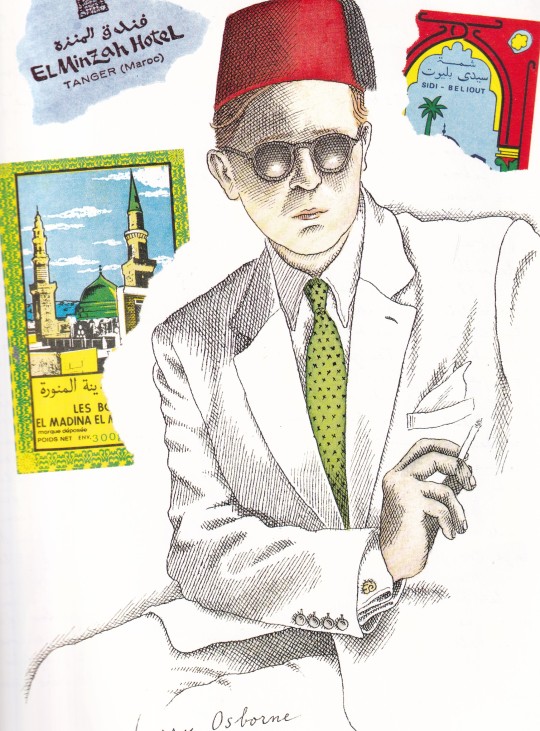

Pierre Le-Tan Album
Dirécteur ouvrage : Frank Maubert
Aubier, Paris 1990, 158 pages, 23,5x31cm, ISBN 2-7007-2838-6
euro 520,00
email if you want to buy [email protected]
“I suoi disegni devono essere letti e le sue parole devono essere viste“, dice di Pierre l’amico e scrittore Umberto Pasti. E’ un privilegio entrare, seppur virtualmente, nella casa studio parigina – un tempo pied-a-terre di Jean Cocteau – di Pierre Le-Tan (1950-2019), illustratore e artista, nato a Parigi da padre vietnamita e madre francese.
E’ dal padre, pittore e figlio di un nobile tonkinese, che Le-Tan impara a disegnare, appassionandosi presto all’amore per i libri antichi e le stampe giapponesi e cinesi. Tanto che – ancora adolescente – Le-Tan è incaricato dal New Yorker Magazine di creare una copertina, opera che segna l’inizio di una lunga e fruttuosa collaborazione editoriale anche con molte altre pubblicazioni, da Vogue e Harper’s Bazaar. Per il New Yorker Pierre realizza 18 copertine.
In oltre 50 anni di lavoro la creatività di Le-Tan si arricchisce, spaziando dalla scenografia per il cinema e il teatro, alla collaborazione con la casa di moda parigina di sua figlia Olympia, ma soprattutto eccelle nella invenzione di oltre 100 copertine di libri e poster di film. Il lavoro di Le-Tan è stato esposto nelle gallerie di tutto il mondo; nel 2004 è stato oggetto di una retrospettiva al Museo Nacional Centro de Arte Reina Sofía di Madrid. Ha realizzato copertine per libri di scrittori noti, come il romanziere premio Nobel Patrick Modiano.
La prosa malinconica di Modiano è perfetta per le riflessioni di Le-Tan spesso rivolte ad una Parigi dimenticata, piena di personaggi strani e fascinosi. Una delle pubblicazioni di Le-Tan, “Album” (1990), traduce al meglio il suo stile intimo e insieme eclettico: un “album” pieno di ricordi, di Greta Garbo, Christian Lacroix, Mick Jagger, foto di vecchi amici, centinaia di disegni che raccontano della gita a casa di Cecil Beaton, a un portasigarette realizzato da Picasso, alle scarpe di Cardin, a una sedia che proviene dalla Reggia di Versailles.
30/05/24
20 notes
·
View notes
Text
Nel nome dei Padri
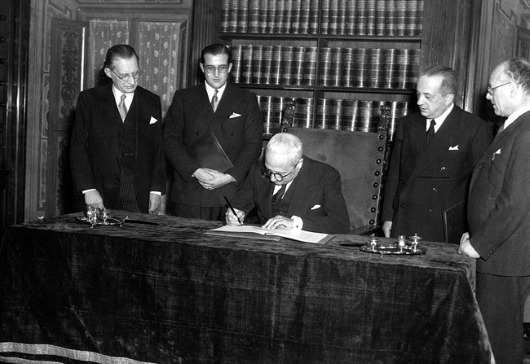
Il Presidente De Nicola firma la Costituzione. Alla sinistra dell'immagine: De Gasperi, alla destra: Terracini.
Qui sotto l'elenco dei membri della Commissione per la Costituzione (o Commissione dei 75).
Gruppo democristiano (26 membri)
Gaspare Ambrosini
Giuseppe Maria Bettiol (sostituisce dal 10 aprile 1947 Giacinto Froggio, dimissionario, che il 6 febbraio 1947 aveva sostituito Ezio Vanoni, divenuto ministro)
Pietro Bulloni
Giuseppe Cappi
Giuseppe Caronia (sostituisce dal 22 febbraio 1947 Giuseppe Togni, divenuto sottosegretario di stato)
Giuseppe Codacci Pisanelli
Camillo Corsanego
Luigi De Michele
Francesco Dominedò
Giuseppe Dossetti
Maria Federici
Giacinto Froggio (sostituisce dal 2 luglio 1947 Umberto Tupini, divenuto ministro)
Giuseppe Fuschini
Angela Gotelli (sostituisce dal 6 febbraio 1947 Carmelo Caristia, dimissionario)
Giorgio La Pira
Giovanni Leone
Salvatore Mannironi
Giuseppe Micheli (sostituisce dal 22 febbraio 1947 Umberto Merlin, divenuto sottosegretario di stato)
Aldo Moro
Costantino Mortati
Attilio Piccioni
Giuseppe Rapelli
Ferdinando Storchi (sostituisce dal 2 luglio 1947 Amintore Fanfani, divenuto ministro)
Emilio Paolo Taviani
Egidio Tosato
Giovanni Uberti (sostituisce dal 24 luglio 1946 Giovanni Ponti, dimissionario)
Gruppo comunista (13 membri)
Giuseppe Di Vittorio (sostituisce dal 10 dicembre 1946 Mario Assennato, dimissionario, che il 24 settembre 1946 aveva sostituito lo stesso Di Vittorio, dimissionario)
Edoardo D'Onofrio (sostituisce dal 27 febbraio 1947 Umberto Terracini)
Antonio Giolitti (sostituisce dal 29 maggio 1947 Riccardo Ravagnan, dimissionario)
Ruggero Grieco (Vice Presidente)
Nilde Iotti
Vincenzo La Rocca
Renzo Laconi (sostituisce dal 19 settembre 1946 Fabrizio Maffi, dimissionario)
Concetto Marchesi
Guido Molinelli (sostituisce dal 30 maggio 1947 Carlo Farini, dimissionario, che il 19 settembre aveva sostituito Giorgio Amendola, dimissionario)
Umberto Nobile
Teresa Noce
Antonio Pesenti (sostituisce dal 10 dicembre 1946 Bruno Corbi, dimissionario, che il 24 settembre 1946 aveva sostituito lo stesso Pesenti, dimissionario)
Palmiro Togliatti
Partito Socialista Italiano (7 membri)
Leonetto Amadei (sostituisce dal 10 dicembre 1946 Giovanni Lombardi, deceduto, che il 25 luglio 1946 aveva sostituito Alessandro Pertini, dimissionario)
Lelio Basso
Michele Giua
Ivan Matteo Lombardo
Pietro Mancini
Angelina Merlin
Ferdinando Targetti
Partito Socialista Lavoratori Italiani (6 membri)
Alessandro Bocconi
Emilio Canevari
Eduardo Di Giovanni (sostituisce dall'11 settembre 1946 Alberto Simonini, dimissionario)
Gustavo Ghidini (Vice Presidente)
Edgardo Lami Starnuti
Paolo Rossi
Gruppo Repubblicano (4 membri)
Giovanni Conti
Francesco De Vita (decaduto perché sottosegretario dal 22 dicembre 1947)
Tomaso Perassi (Segretario)
Oliviero Zuccarini
Unione Democratica Nazionale (4 membri)
Aldo Bozzi
Giuseppe Paratore
Giovanni Porzio
Vito Reale (sostituisce dal 16 giugno 1947 Giuseppe Grassi, divenuto ministro)
Gruppo Autonomista (3 membri)
Giulio Bordon
Piero Calamandrei
Emilio Lussu
Fronte liberale democratico dell'Uomo Qualunque (3 membri)
Francesco Colitto
Francesco Marinaro (Segretario)
Ottavio Mastrojanni
Gruppo Liberale (3 membri)
Bartolomeo Cannizzo (sostituisce dal 14 dicembre 1946 Gennaro Patricolo, dimissionario, che il 24 luglio 1946 aveva sostituito Ottavia Penna Buscemi, dimissionaria)
Orazio Condorelli (sostituisce dal 17 ottobre 1947 Roberto Lucifero d'Aprigliano, dimissionario)
Guido Cortese (sostituisce dal 27 giugno 1947 Luigi Einaudi, divenuto ministro)
Gruppo Misto (3 membri)
Gustavo Fabbri
Andrea Finocchiaro Aprile
Meuccio Ruini (Presidente)
Democrazia del Lavoro (2 membri)
Mario Cevolotto
Enrico Molé
Unione Nazionale (1 membro)
Pietro Castiglia
Fonte: Wikipedia.
18 notes
·
View notes
Text
"Il fatto che un'opinione sia ampiamente condivisa, non è affatto una prova che non sia completamente assurda. Anzi, considerata la stupidità della maggioranza degli uomini, è più probabile che una convinzione diffusa sia balorda che sensata."
Da "Marriage and Morals", Bertrand Russell, 1929

"È nota la definizione della democrazia come sistema pieno di difetti ma di cui non si è ancora trovato nulla di meglio. Da questa ragionevole assunzione discende, per la maggior parte della gente, la convinzione errata che la democrazia (il migliore o il meno peggio dei sistemi di governo) sia quello per cui la maggioranza ha sempre ragione. Nulla di più falso. La democrazia è il sistema per cui, visto che è difficile definire in termini qualitativi chi abbia più ragione degli altri, si ricorre a un sistema bassamente quantitativo, ma oggettivamente controllabile: in democrazia governa chi prende più consensi. E se qualcuno ritiene che la maggioranza abbia torto, peggio per lui: se ha accettato i principi democratici deve accettare che governi una maggioranza che si sbaglia.
Una delle funzioni delle opposizioni è quella di dimostrare alla maggioranza che si era sbagliata. E se non ce la fa? Allora abbiamo, oltre a una cattiva maggioranza, anche una cattiva opposizione. Quante volte la maggioranza può sbagliarsi? Per millenni la maggioranza degli uomini ha creduto che il sole girasse intorno alla terra (e, considerando le vaste aree poco alfabetizzate del mondo, e il fatto che sondaggi fatti nei paesi più avanzati hanno dimostrato che moltissimi occidentali ancora credono che il sole giri) ecco un bel caso in cui la maggioranza non solo si è sbagliata ma si sbaglia ancora. Le maggioranze si sono sbagliate a ritenere Beethoven inascoltabile o Picasso inguardabile, la maggioranza a Gerusalemme si è sbagliata a preferire Barabba a Gesù, la maggioranza degli americani sbaglia a credere che due uova con pancetta tutte le mattine e una bella bistecca a pasto siano garanzie di buona salute, la maggioranza si sbagliava a preferire gli orsi a Terenzio e (forse) si sbaglia ancora a preferire "La pupa e il secchione" a Sofocle. Per secoli la maggioranza della gente ha ritenuto che esistessero le streghe e che fosse giusto bruciarle, nel Seicento la maggioranza dei milanesi credeva che la peste fosse provocata dagli untori, l'enorme maggioranza degli occidentali, compreso Voltaire, riteneva legittima e naturale la schiavitù, la maggioranza degli europei credeva che fosse nobile e sacrosanto colonizzare l'Africa.
In politica Hitler non è andato al potere per un colpo di Stato ma è stato eletto dalla maggioranza, Mussolini ha instaurato la dittatura dopo l'assassinio di Matteotti ma prima godeva di una maggioranza parlamentare, anche se disprezzava quell'aula «sorda e grigia». Sarebbe ingiusto giocare di paradossi e dire dunque che la maggioranza è quella che sbaglia sempre, ma è certo che non sempre ha ragione. In politica l'appello alla volontà popolare ha soltanto valore legale ("Ho diritto a governare perché ho ricevuto più voti") ma non permette che da questo dato quantitativo si traggano conseguenze teoriche ed etiche ("Ho la maggioranza dei consensi e dunque sono il migliore").
In certe aree della Sicilia e della Campania i mafiosi e i camorristi hanno la maggioranza dei consensi ma sarebbe difficile concluderne che siano pertanto i migliori rappresentati di quelle nobilissime popolazioni. [...]"
Da una "Bustina di Minerva" di Umberto Eco del 27 Maggio, 2010

"Alta sui naufragi, dai belvedere delle torri
China e distante sugli elementi del disastro
Dalle cose che accadono al di sopra delle parole
Celebrative del nulla, lungo un facile vento
Di sazietà, di impunità
Sullo scandalo metallico di armi in uso e in disuso
A guidare la colonna di dolore e di fumo
Che lascia le infinite battaglie al calar della sera
La maggioranza sta, la maggioranza sta
Recitando un rosario di ambizioni meschine
Di millenarie paure, di inesauribili astuzie"
Da "Smisurata preghiera”, brano di Fabrizio De André tratto da "Anime Salve", 1996
13 notes
·
View notes
Text
Tagged by wonderful @uneassasymphonie
Last song: Good Good Love by Avi Kaplan (i love his voice)
Fav colour: it's probably pine green or teal blue
Last book: last one i finished was Crossroads of Ravens by Andrzej Sapkowski and one i'm currently reading is N-4 Down by Mark Piesing (it's focused on Umberto Nobile but i'm more interested in Amundsen's story here)
Last movie: Paths of Glory (1957) because someone recommended me it. It was pretty good
Last tv show: i've recently finished The Dragon Prince with my sister (we were watching it together since the beginning in 2018)
Sweet/savory/spicy: spicy
Relationship status: in a relationship
Last thing i searched: stainless steel sushi chopsticks (i'm planning to buy some)
Current obsession: that's a good question. I feel somewhat in between and just going back to some things i was obsessed with before (i.e. the Witcher books and games, Red Dead Redemption II). And of course Arcane is still in the back of my head (especially because i see A LOT of amazing fanarts)
Looking forward to: the Polish premiere of Nosferatu. I want to see it in the cinema but i have to wait until February 21!
Fav drink: tea with honey and lemon <3 (gotta keep the scurvy at bay)
Song playing 24/7: A Tear in Space by Glass Animals
Current fav character: i'm still not over the last season of Arcane, so it's probably Viktor for now
Fun activity you would like to get into: i'm planning to try pole dancing to see if it's something for me. Also i want to travel more around the country with my boyfriend
Last video game: i'm currently getting addicted to Dredge (fun and scary boat game)
Last comic/graphic novel: i don't read them much but the one i did was Vinland Saga (still need to finish a few volumes)
Tagging: @theroguescientist @vulpineknave @nerdypipsqueak @explorersaremadeofhope (no pressure)
5 notes
·
View notes
Text
amundsen doing the me showing the devil the man I killed myself over tiktok and it's umberto nobile
5 notes
·
View notes
Text

Swedish pilot Eingar Lundborg rescued Umberto Nobile after the crash of the airship Italia. 1928.
19 notes
·
View notes
Text
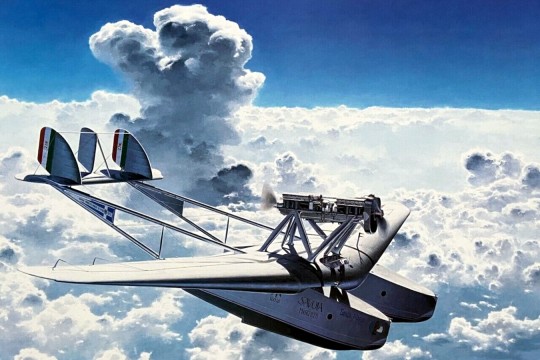
1927 Savoia-Marchetti SM 55 'Santa Maria' - Shigeo Koike
The head of the Italian government Benito Mussolini suggested that the colonel of the Regia Aeronautica Francesco de Pinedo, famous aviator for his solo raid Rome-Australia-Tokyo-Rome in 1925, made a flight to the Western hemisphere to inspire pride in the population of Italian descent who had emigrated to the Americas. This idea became the "Four Continents" flight of 1927, intended to demonstrate the ability of a flying boat to fly from Italy to Africa and cross the Atlantic Ocean to Brazil followed by several stops in South America and the Caribbean, a tour of the United States and Canada, and a transatlantic flight back to Europe that finally ended in Rome. Pinedo's pilots, Captain Carlo Del Prete, and flight engineer Vitale Zacchetti took off on February 13, 1927 from Cagliari, Sardinia, in an S.55 and headed west across the South Atlantic. Four months later, on June 16, 1927, the seaplane landed in the port of Ostia having traveled 46960 km (29180 miles) in 193 hours of flight and made more than 50 stops.
On 20 June 1928 Savoia-Marchetti S.55 I-SAAT Santa Maria, piloted by Ten. Col. Umberto Maddalena of the Italian air force, located survivors of Arctic explorer Umberto Nobile's crashed airship Italia on an ice floe about 120 km (75 mi) northeast of Nordaustlandet, Svalbard.
15 notes
·
View notes
Text




IMAGENES Y DATOS INTERESANTES DEL DIA 12 DE MAYO DE 2024
Día Internacional de la Enfermería, Día Internacional de las Mujeres Matemáticas, Día Mundial de la Fibromialgia y del Síndrome de la Fatiga Crónica, Día Europeo de las PYMEs, Día Internacional de la Sanidad Vegetal, Semana de Acción Contra los Mosquitos, Año Internacional de los Camélidos.
San Nereo, Santo Domingo de la Calzada y Santa Domitila.
Tal día como hoy en el año 2017
Un ciberataque masivo (más de 200.000 infectados) golpea a grandes empresas en al menos 140 países. El virus informático, del tipo rasonware, lanzado desde servidores chinos, afecta a empresas como Fedex, el sistema de salud británico o Telefónica de España. (Hace 7 años)
2010
Se estrella el vuelo 711en la maniobra de aterrizaje en las inmediaciones de la pista del aeropuerto de Trípoli (Libia). En el accidente pierden la vida 103 personas y sólo hay un sobreviviente, un niño de 9 años.
1951
El presidente estadounidense Truman da luz verde a experimentar la bomba de hidrógeno, un arma tan poderosa que, a su lado, la bomba atómica no pasa de ser un mero fuego artificial. La explosión de prueba se realiza en un desolado atolón de Micronesia, en el Océano Pacífico, concretamente, en el islote Eniwetok (islas Marshall). La bomba de hidrógeno, también llamada bomba H, es un ingenio formado por dos bombas, una primera atómica que, al estallar, provoca una reacción de fisión dentro una segunda que consiste en una mezcla de hidrógeno, deuterio, tritio y litio, lo que le otorga un potencial enormemente superior a las bombas de uranio y de plutonio, también llamadas bombas de fisión. (Hace 73 años)
1949
Los EE.UU. y la URSS llegan a un acuerdo negociado en el seno de la ONU para poner fin al bloqueo que sufre la ciudad alemana de Berlín. (Hace 75 años)
1940
Las panzerdivisionen alemanas, después de franquear el bosque de las Ardenas en Bélgica, irrumpen con sus potentes blindados en la llanura francesa, y rebasan por la espalda al ejército francés y la Línea Maginot. El 10 de junio se firmará el armisticio por el que Francia quedará dividida en dos zonas: la ocupada y la "libre", bajo el gobierno colaboracionista con la Alemania nazi del mariscal Pétain. El 14 de junio los alemanes desfilarán victoriosos por los Campos Elíseos de París. (Hace 84 años)
1927
En Nicaragua, Augusto César Sandino anuncia, mediante una circular dirigida a las autoridades locales de todos los departamentos, su determinación de continuar la lucha contra las tropas de intervención estadounidenses que en enero desembarcaron en Corinto. (Hace 97 años)
1926
A bordo del dirigible Norge, el explorador noruego Roald Amundsen, el científico americano Lincoln Ellsworth y el ingeniero italiano Umberto Nobile (diseñador del dirigible), logran sobrevolar el Polo Norte por primera vez. (Hace 98 años)
1776
En Francia, Luis XVI, presionado por la nobleza, destituye al director general de Finanzas que ha suprimido los impuestos que pesan sobre los económicamente débiles, cargándoselos a cambio a los terratenientes. (Hace 248 años)
1588
Enrique III, rey de Francia, huye durante un levantamiento de los católicos y será apresado más tarde por el pretendiente católico al trono, duque Enrique de Guisa. El rey se verá obligado a nombrar al duque, lugarteniente general de Francia. (Hace 436 años)
1551
En Lima, Perú, se funda la Universidad Nacional Mayor de San Marcos, la más antigua de América. (Hace 473 años)
1539
El conquistador y explorador español Hernando de Soto, hasta hoy gobernador de Cuba, sale de La Habana con 11 naves y casi 1.000 hombres aprovisionado con abundantes víveres y armas para emprender la conquista de La Florida, descubierta por Juan Ponce de León en 1513. Unos días después llegará a la costa occidental de la Florida, cerca de la actual Bradenton. Desde allí iniciará la exploración del territorio y descubrirá, para su desgracia, que en vez de hallar abundante oro, el lugar bulle de pantanos plagados de mosquitos, con una húmedad y calor extremos. Los nativos también le hostigarán complicándole su labor de exploración. (Hace 485 años)
907
El emperador chino Ai Di es depuesto por el ejército de Zhu Wen, cabecilla de la insurrección campesina, poniendo punto final a la dinastía Tang tras 289 años de gobierno y 21 emperadores, en los que China se mantuvo unida convirtiéndose en modelo político y centro cultural del Asia Oriental. (Hace 1117 años)
3 notes
·
View notes
Text
“ Sebbene, oggi, il numero delle prove a sostegno del ruolo fondamentale della cooperazione nell’evoluzione delle specie viventi si sia enormemente arricchito, l’idea continua a essere percepita come del tutto marginale rispetto alla solidità della controparte competitiva. Perché? Sono convinto che la causa principale dello scarso interesse per lo studio della cooperazione come forza evolutiva sia legata al fatto che la maggior parte – quasi la totalità – delle evidenze a sostegno di questa teoria proviene dal mondo delle piante che, come tali, non sono considerate rilevanti. L’antropocentrismo o, a voler essere magnanimi, l’animalocentrismo che affligge il mondo della scienza è un problema serio. La nostra visione del mondo come un luogo in cui i conflitti e le privazioni sono forze basilari che dominano l’evoluzione sono un classico esempio di questa distorsione animale. Modelli matematici molto conosciuti come, ad esempio, quello della competizione interspecifica, diventato poi noto come il modello predatore-preda, sviluppato da Vito Volterra e Alfred Lotka nel 1926, sebbene oggi siano intesi come validi universalmente, sono stati eleborati per descrivere una relazione di tipo animale. Poco dopo la fine della prima guerra mondiale, Umberto D’Ancona, uno dei più importanti zoologi italiani del Novecento, studiando le popolazioni di pesci nel mare Adriatico, aveva notato che le percentuali delle diverse specie pescate mostravano un andamento tipicamente fluttuante. Cercando di capirne di più, ne parlò con Vito Volterra, grande matematico che in seguito sarebbe diventato anche suo suocero, e quest’ultimo sviluppò appunto il modello matematico che spiegava il fenomeno. Al di là della bellezza e del valore indiscutibile del modello predatore-preda, resta il fatto che questo modello, che ha così profondamente influito sullo studio della dinamica delle popolazioni naturali e più in generale, direi, sulla nostra idea di relazioni fra specie, è un modello ideato, sviluppato e sperimentato per rispondere ad esigenze tipicamente animali. Che ha a che fare il modello predatore-preda con il mondo delle piante? Non è l’unico caso, molti altri modelli che hanno avuto un grande peso sulla nostra consapevolezza del funzionamento delle comunità, meno noti al grande pubblico, ma molto influenti fra gli addetti ai lavori, hanno valore quasi unicamente in ambito animale e non possono assolutamente essere considerati di valore generale.
Vorrei fosse chiara l’assurdità della faccenda: scoperte ottenute nel mondo vegetale non vengono ritenute meritevoli di alcuna attenzione fin quando non sono replicate in ambito animale; al contrario, modelli ovviamente validi nel solo mondo animale sono, ipso facto, considerati di natura universale. Pensate all’irrazionalità di questa posizione: le scoperte effettuate nell’85% degli esseri viventi (le piante) richiedono, per essere ritenute universalmente valide, di essere confermate nello 0,3% del mondo animale! Non il contrario. E così viviamo con l’idea ridicola e pericolosa che quel che vale per lo 0,3% nobile della vita (gli animali) sia ciò che caratterizza la vita intera e che è meritevole di essere conosciuto, il resto è del tutto marginale. Non so se l’irragionevolezza di questa situazione vi colpisca come colpisce me. Che l’85% del mondo vegetale sia, da solo, la rappresentanza unica e indiscutibile della vita del pianeta non interessa a nessuno. È come se una legge proposta dall’85% dei rappresentanti del nostro Parlamento, per essere definitivamente promulgata, dovesse passare al vaglio di uno 0,3% della stessa rappresentanza parlamentare che, a sua discrezione, può approvarla o respingerla. “
Stefano Mancuso, La pianta del mondo, Laterza (collana i Robinson / Letture), 2022⁷; pp. 81-82.
#Stefano Mancuso#botanica#botanici#letture#natura#vita#La pianta del mondo#leggere#scritti saggistici#antropocene#antropocentrismo#cooperazione#Alfred Lotka#Vito Volterra#divulgazione scientifica#biologia#evoluzionismo#Novecento#competizione interspecifica#animalocentrismo#zoologia#libri#Umberto D’Ancona#specie viventi#mare Adriatico#conoscere#mondo vegetale#uguaglianza#esseri viventi#discriminazione
15 notes
·
View notes
Text





“Colossea”
Colossea is a megayacht with a detachable superstructure, and that superstructure just happens to be a blimp. It’s not just any blimp, though: it’s a modern interpretation of the iconic, history-making Norge (ex N1), which marked the first verified expedition to the North Pole on May 12, 1926.
The creation of Roald Amundsen and Lincoln Ellsworth was piloted to glory by Captain Umberto Nobile at a time when humanity’s dream of flight was just beginning.
Courtesy: Pierpaolo Lazzarini
#art#design#superyacht#megayacht#ocean#luxury yacht#boat#sea#ship#architecture#yacht gif#colossea#billionairelife#billionaire#yachtconcept#concept#render#gif#pierpaolo lazzarina#flyinggif#flying private#blimp#norge#blimp gif#airship gif#aiship#dirigible
82 notes
·
View notes
Text

Julia and the Shark
Author: Kiran Millwood hargrave
First published: 2021
Rating: ★★★★★
One of the best middle-grade books I have ever read I think. Kiran Millwood Hargrave is a gorgeous writer and her use of language is simply masterful. She also chooses fascinating topics and it pains me that from time to time all that lacks a certain impact. But Julia does have it. The simplistic illustrations are captivating and perfectly enliven the story.
The Last Princess: The Devoted Life of Queen Victoria's Youngest Daughter
Author: Matthew Dennison
First published: 2007
Rating: ★★★☆☆
If you have a truly deep interest in Queen Victoria, her family, or a life of nobility in the 19th century, this is a book you should read. Princess Beatrice never held any important political posts, never made a grand marriage, never had to make any momentous decisions, and is largely forgotten today. But Mathew Dennison put together a gentle portrait of her existence and through her introduced yet another layer to other, more famous personages in Beatrice´s life. However, if you are after a book that would somehow shock you, or give you tremendous new information or gossip, pass on this one. It is slow and the author does repeat his main points at almost every turn, which sometimes could be tedious. Also, prepare yourself for lots of assumptions that fill up empty places we know nothing about.
The Infinity of Lists
Author: Umberto Eco
First published: 2009
Rating: ★★★☆☆
A gorgeous and richly illustrated list of lists. I was surprised at how many things actually are "lists", some of the points were fascinating, and some went over my head. A difficult book to read to be honest.
Visions of Beauty
Author: Kinuko Y. Craft
First published: 2022
Rating: ★★★★★
I was waiting to show the book also to my mum, who studied art at university and had never heard of Kinuko Y. Craft before. Today we spent over an hour going through the pages together and she said it was possibly the most beautiful thing she has ever seen. As for me, I have been aware of the artist because I came across her illustrations of fantasy book covers (Wildwood Dancing was a particular favourite of mine). When I, completely by chance, found the Visions of Beauty, I was greatly excited. What a stunning compilation of paintings and drawings! What I find particularly remarkable about them is that I can often clearly see the inspiration behind the picture (there is Da Vinci and my favourite Botticelli, there is some Mucha and Raffael, there are medieval altar paintings as well as portraits from the 19th century), but it is never a copy and always takes on the originality of its own. The pictures can be read, not just observed, with numerous tiny details incorporated into the portraits, so even when I think I have seen it all, I find more and more flowers, animals, symbols, and even human figures where before seemed to be just foliage. I cannot even choose my favourite painting, because there are way too many.
The Idiot
Author: Fyodor Dostoyevsky
First published: 1869
Rating: ★★★★☆
I don´t think there is much need to write yet another review of this book when so much has been said by more eloquent readers than I am. To me personally, it was particularly interesting after reading a biography of Dostoyevsky and I could easily see the roots and traces of many incidents and thoughts presented in this novel. But ultimately I did find the story a bit drowned by too much that was said in ways that were simply too dragged out. And yet I still think about that ending.
Imitation of Mary
Author: Alexander De Rouville
First published: 1977
Rating: ★★★★☆
Very comforting for anyone with Catholic leanings and devotion to Mary.
Demon in the Wood
Author: Leigh Bardugo
First published: 2022
Rating: ★★★★☆
I just really enjoy the stories Leigh Bardugo tells... this is a very nicely created graphic novel, but to be completely honest, I would have preferred it to be simply a written story.
Mislaid in Parts Half-Known
Author: Seanan McGuire
First published: 2023
Rating: ★★☆☆☆
I keep reading these because they are short and well-intentioned... but half of these books do not really have a story. This one is one of the storyless ones, not to mention I felt like it was by far the most filled with long speeches about points already made, conclusions already reached, dilemmas already introduced. Also, all the main characters seem to be the same.
Cleopatra: A Life
Author: Stacy Schiff
First published: 2011
Rating: ★★★★☆
Everybody knows the story of Cleopatra and yet, as this book lets you know in a very readable and convincing style, we actually know very little for certain. Stacy Shiff does for the Egyptian Queen what Robert K. Massie did for Catherine the Great: painting a vivid portrait of a woman in a position of power in an age when she was an anomaly. Her achievements have been tainted, her motivations misconstrued, her personality dragged through the mud. We arguably have a better grasp of the Russian empress than Cleopatra, but I imagine they both would have a lot to talk about.
Ruthless Vows
Author: Rebecca Ross
First published: 2023
Rating: ★★★☆☆
Much like I enjoyed the first installment, I enjoyed this second one as well. Everything is still in it, from a swoon-worthy romance to some truly excellent use of language and very evocative scenes of being trapped in a war. Nice.
The Poisonwood Bible
Author: Barbara Kingsolver
First published: 1998
Rating: ★★★★★
This is a story of a family, where every voice is their own and their feelings are communicated brilliantly to the reader. It is also a clear-eyed look at colonialism in the 20th century, human arrogance and prejudice as well as familial loyalty and love. It is a heartbreaking read, perhaps a bit too lengthy once the pinnacle of the story passes, but I found it both engaging and in some ways also enlightening.
The Testaments
Author: Margaret Atwood
First published: 2019
Rating: ★★★★☆
While it lacks the shock factor of its predecessor, The Testaments offers a satisfying conclusion in its stead. Was it necessary? Not really. But in the modern world the dystopia once imagined by Margaret Atwood needs to be remembered. Our reality seems to be striving towards it, sometimes with terrifying speed.
The Book of Magic
Author: Alice Hoffman
First published: 2021
Rating: ★★★★☆
More than magic itself, this whole series is about being loyal to your family and the unconditional love that binds that family. The Book of Magic reunites the reader with all of the characters that we already love and now we see the end of their journey. And truly I mean all of them. Alice Hoffman yet again writes in a way that makes you smell the lilacs and hear the bees in the trees. Lovely.
6 notes
·
View notes
Text
Arta prudenței
Vreodată încrederea în puterea de pătrundere a domniei tale și asentimentul de a voi să mărturisești adevărul te-ar putea împinge să-i dai vreun sfat bun și cuiva care-i mai sus decât domnia ta. Să n-o faci niciodată. Orice victorie atrage ura celui învins, iar dacă ai repurtat-o contra propriului stăpân, ori e prostească, ori e păgubitoare. Principii doresc să fie ajutați, nu depășiți. Dar să fii prudent și cu cei care-ți sunt egali. Nu-i umili cu virtuțile domniei tale. Nu vorbi niciodată de domnia ta: ori te-ai lăuda, și-ar fi vanitate, ori te-ai condamna, și-ar fi o prostie. Mai degrabă lasă să-ți descopere alții vreun păcat de nimic, pe care invidia să-l poată rumega fără să-ți aducă vreo pagubă. Va trebui să fii mai mult, iar uneori să pari că ești mai puțin. Struțul nu râvnește să se înalțe în văzduh, expunându-se unei căderi pilduitoare, ci lasă să i se descopere pe încetul frumusețea penelor. Și mai ales, dacă nutrești pasiuni, nu le scoate la vedere, oricât de nobile ți-ar părea. Nu trebuie să îngăduim tuturora intrarea în inima noastră. O tăcere prudentă și precaută este teaca înțelepciunii. Umberto Eco - Insula din ziua de ieri https://www.cititoramator.ro/2023/02/arta-prudentei.html?utm_source=dlvr.it&utm_medium=tumblr
7 notes
·
View notes